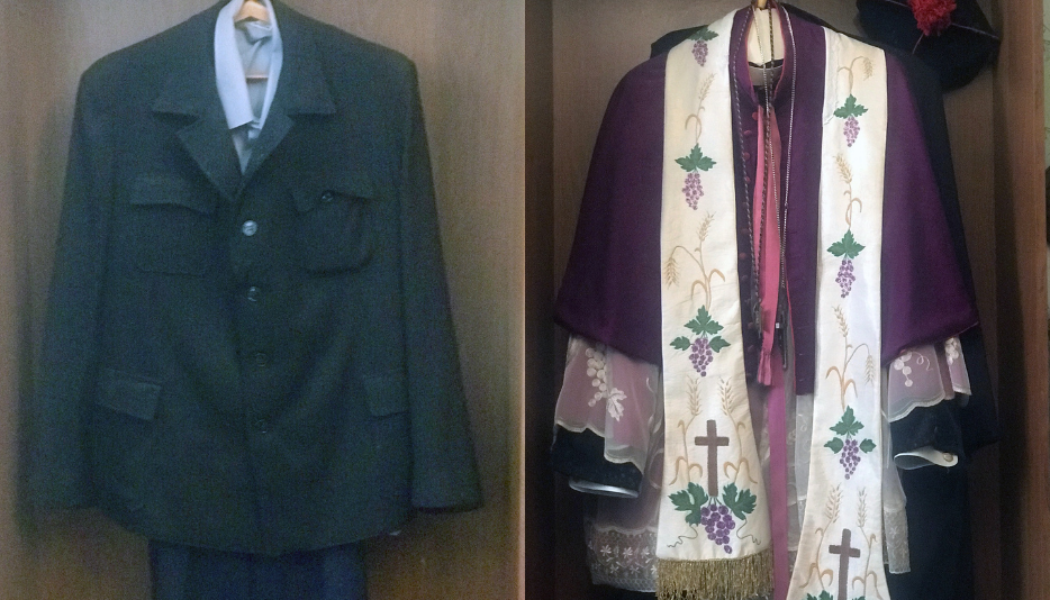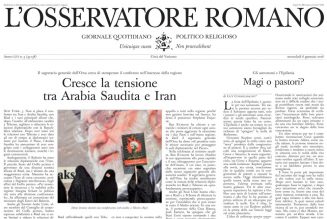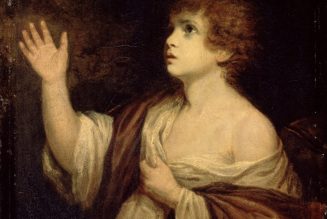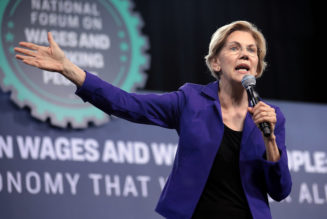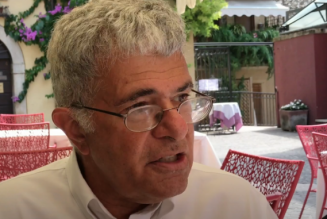ODESSA, Ukraine — Exploring the grand city of Odessa, created in 1794 by Catherine the Great, I discovered many marvels. Orthodox churches, beautifully restored, thriving with activity. A happy, youthful populous. Streets lined with trees brought by Duke de Richelieu from around the world — American sycamores, magnolias, and poplars among them — because he saw horticulture as a way to show Odessa’s cosmopolitan purpose.
And I found a quiet corner of Catholic history that deserves recounting…
Wonderous was a summer Sunday morning when, surrounded by believers after Mass, I was led to the basement at St. Peter’s Catholic Church in Odessa to see a one-room museum dedicated to parish history.
“We kept the fire burning,” explained Zosia Zainczkovska, a lifelong parishioner at St. Peter’s. It was the only Latin/Roman rite Catholic Church allowed to continue functioning in southern Ukraine during the Communist period, under the guidance of one man, Salesian Father Tadeusz Hoppe, who ministered to the city’s faithful from 1958 until 1991.
The open status of St. Peter’s was especially remarkable, considering that the nearby Catholic Assumption of the Blessed Virgin Mary Cathedral was converted into a gymnasium and the monumental Orthodox Transfiguration Cathedral was bombed.
“This is where our priest lived, for 45 years. From his arrival until his death in 2003, God rest his soul,” said Zainczkovska. Father Hoppe lived in the cellar because the state had expropriated the priests’ residence next door.
Dominating the museum is the priest’s big wooden desk. Prominently displayed on a wall behind the desk are two large frames each highlighting an outfit.
On the left, a black suit with a light-blue shirt, on the right a pastor’s full cassock: a delicate lace surplice under a burgundy cape, a stole with grapes entwined with stalks of wheat, and a biretta with a magenta pompom. Parishioners explained to me that on the street, their priest had to wear a working man’s suit, the very one on the wall.

John Chin, a Salesian seminarian helping at St. Peter’s, showed me a chalice inscribed “For the Catholics of Odessa,” brought to Father Hoppe by a Vatican delegation representing Pope Paul VI. “His dedication was appreciated all the way to the Holy Father,” said Chin.
In a documentary on Father Hoppe, made by the Society of Don Bosco, the narrator explains how the Polish priest was harassed and spied on by Soviet operatives. He was once interrogated because he stepped a foot out on the street in his priestly clothes.
Yet he did not hide in his church. For many years he traveled hours away to a neighboring republic each first Friday to offer Mass in Chisinau, Moldova. For Easter and Christmas, he said Mass in Odessa the day before the holy day then took a night train to Kyiv to celebrate, followed by a flight to Chisinau to celebrate again, and bused or taxied back to Odessa — a giant geographic triangle of religious devotion.
Guest Book and Artwork
Among the little museum’s riches is a guest book with entries going back decades. Father Hoppe received many visits and support from Vatican diplomats and bishops from around the world during the pontificates of John XXIII, Paul VI, and John Paul II.
Cardinal Johannes Willebrands, president of the Pontifical Council for Promoting Christian Unity celebrated Mass in Odessa 1973 together with the archbishop from New Delhi, India. (Father Hoppe enthusiastically maintained ties with other faiths in Odessa.)
Two bishops from Vietnam visited in 1986, the same year a delegation from Pax Christi USA appeared. Two years earlier, a group of religious sisters from Cuba, Chile, Mexico and Nicaragua arrived, noting, “What a beautiful experience to share the Mass with the Russian people.”
The visits served to encourage the St. Peter’s faithful according to Salesian Father Michael Wocial, a Polish-born priest serving in Ukraine, who spent over 10 years in Odessa. “The Church is so much larger than one country. This ongoing communication with the Universal Church was very encouraging to Father Hoppe and the parish, even as a form of protection.”
As soon as communism collapsed in 1991, Father Hoppe led the parish in demanding that the cathedral be reopened, which it was. Fellow Salesians came to help manage the expanding community.
And in August 2003, dozens of believers hand carried, through the city’s streets, a giant 1850 painting of the Blessed Mother which hung in St. Peter’s for the artwork’s security. They brought the piece, a Raphael copy, back to its home above the alter at the cathedral. Father Hoppe helped lead the procession. He died three months later.
Serving an International Community
At a Sunday evening, English-language Mass at the Assumption of the Blessed Virgin Mary Cathedral, a youthful Ukrainian Latin rite Catholic priest celebrated Mass for a congregation with people from at least four continents. The choir was comprised mainly of students from Africa studying in local universities and the pews included tourists, diplomats, expatriates and locals. Mass is offered in Ukrainian, Russian and Polish, as well.
“Odessa has always been an international city because it is a major port,” explained Father Roman Krat, 40, after Mass. “Before the pandemic, I was on call to offer Mass on cruise ships that docked here.”
Father Roman, a diocesan priest who leads the Catholic outreach program to international students, gained impeccable English while serving in Great Britain for several years. He has also helped in German churches. His experience abroad has led him to consider it especially important for the Latin rite Catholic Church in encourage more parishioner engagement through Bible study sessions, for example.
“The Latin Catholic Church in Ukraine is strongly associated with Polish worship traditions, which are wonderfully pious,” said the cleric, whose brother is also a Catholic priest, now in England. “What people are seeking is more personal connection through the Word, I believe.”
Lively and youthful as Odessa is, with evidence of new investment despite the pandemic, there are zero signs that part of the country is at war. Or, that some 200 miles away, the Russian government controls Crimea, ever since a 2014 invasion that kicked off an unresolved international conflict.
A Jovial Bishop
Bishop Stanislav Szyrokoradiuk guides the Diocese of Odessa-Simferopol, meaning, territory that includes Crimea, territory claimed by both Ukraine and Russia since 2014.
He was selected by Pope Francis, after spending five years (2014-19) as bishop of Kharkiv-Zaporizhzhia in eastern Ukraine, which covers conflict zones at the Ukraine-Russia border. Bishop Szyrokoradiuk led Ukraine’s Caritas-Spes program for 20 years (1996-2016), so he is steeped in both war and the Church’s humanitarian response.
Consecrated bishop in Rome by Pope John Paul II in 1995, he first met the Polish pope in 1989 when Bishop Szyrokoradiuk was a clandestine Franciscan. (He had taken vows secretly the year before.)
How are the 12 Latin rite Catholic priests serving 12 parishes in Crimea, including several Dominicans? Most are Ukrainian. “If they don’t touch politics, they can work normally,” the bishop explained.
Auxiliary Bishop Jacek Pyl lives in Crimea and the bishop is constantly in touch with him.
“He is feeling good there, said Bishop Szyrokoradiuk. “He might not like the political situation, but he has a missionary character, so he is finding his way.”
Bishop Pyl was already serving on the peninsula when the Russians took over.
Bishop Szyrokoradiuk said that the Polish-born Bishop Pyl learned Russian with the intention of eventually serving there. “So, it is providential he is working in Russia now,” exclaimed the prelate.
“Paradoxical” Gift
Bishop Szyrokoradiuk shared a “paradoxical” story contrasting relations with Ukrainian authorities, who used to control Crimea, and the current Russian officials.
For close to 25 years, from 1991-2014, Latin rite Catholics requested from Ukrainian local officials in Crimea that a church be returned. During Soviet communism, it was used as a movie theater, so it was in poor condition, but it retained its sacred power for local people. The Ukrainians refused to yield the building.
When the Church petitioned the Russian government for the dilapidated building they got it back immediately.
“I think it took one day,” remembered Bishop Szyrokoradiuk. “But they returned a property in terrible condition.”
Yet, recounted the bishop, Mass is being celebrated in a small chapel that has been opened in the sacred space and “the people are very glad they can visit now.”
Join Our Telegram Group : Salvation & Prosperity
